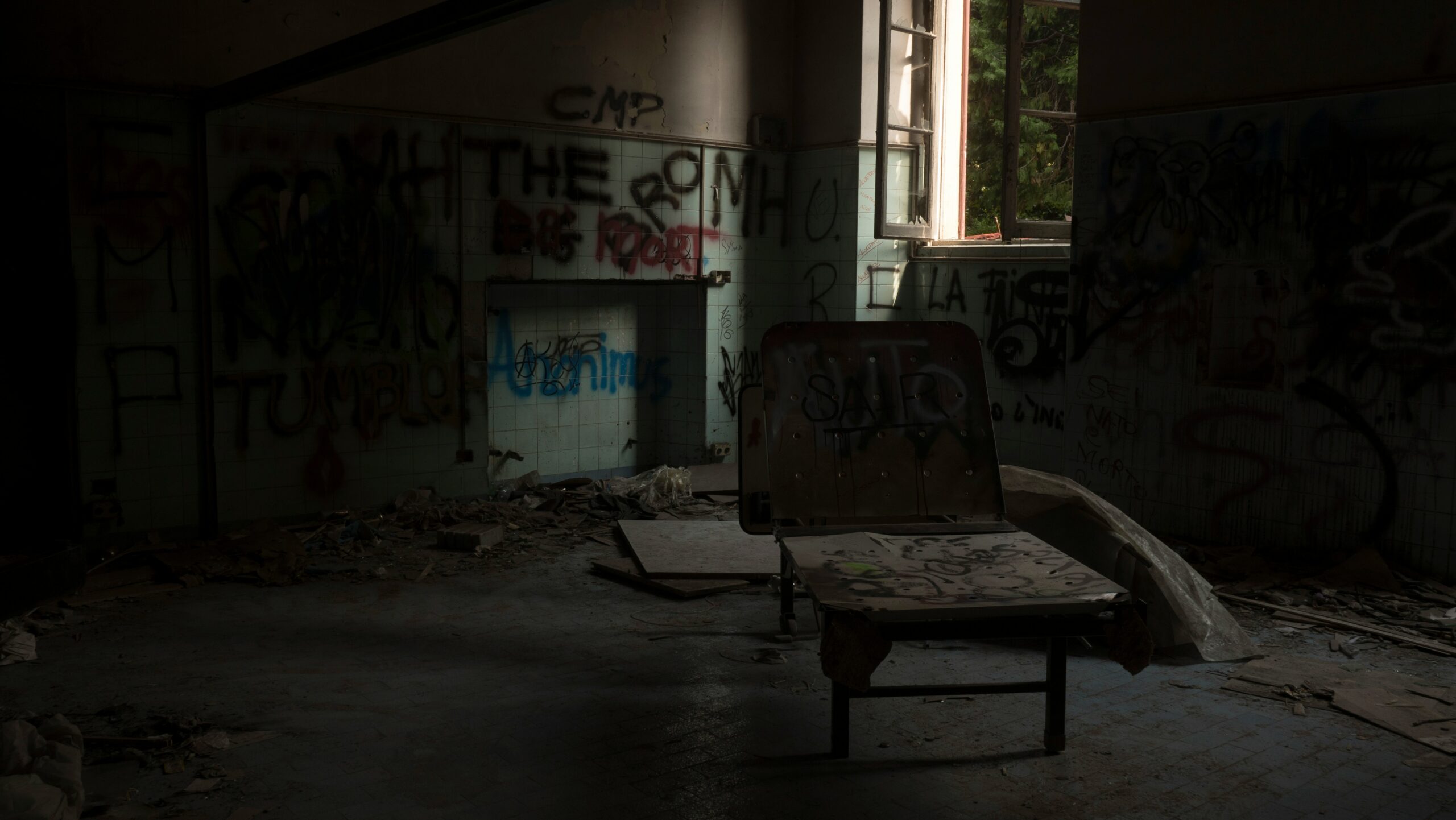Overview of the Antioch High School Shooting
The Antioch High School shooting occurred on March 27, 2023, in Nashville, Tennessee, a tragic event that sent shockwaves throughout the local community and the nation. The incident took place during school hours, around 10:13 AM, when a heavily armed assailant entered the premises. The shooting unfolded rapidly, creating chaos and alarm as students and staff sought safety in various locations within the school. Witnesses described hearing gunshots and recognizing the gravity of the situation, prompting immediate action.
Law enforcement responded swiftly to the emergency calls, arriving at the scene within minutes as protocols were enacted to address the threat. Responding officers conducted a systematic search of the building, ensuring that all individuals were safe while also focusing on neutralizing the threat posed by the shooter. Tragically, this incident resulted in multiple casualties, including both students and staff, adding to the heartbreak of an already traumatic experience for the Antioch community.
The response from the community was one of solidarity and support in the aftermath of the shooting. Local organizations and mental health professionals mobilized to provide counseling services to those affected by the events. Vigils were held to honor the victims and to promote healing among survivors and families grappling with the aftermath of the shooting. The tragedy at Antioch High School sparked discussions across the nation regarding school safety, gun control measures, and mental health resources, reflecting a collective urge to understand and respond to the factors contributing to such violent acts in educational institutions.
Background on Antioch High School
Antioch High School, located in the Antioch neighborhood of Nashville, Tennessee, plays a significant role in the local educational landscape. Established in 1971, the school serves a diverse population, reflective of the cultural richness within the community. Currently, Antioch High School accommodates approximately 1,600 students, with a demographic composition that includes a mix of ethnicities and socioeconomic backgrounds. This diversity enriches the school culture, fostering an environment where students can learn from each other’s experiences and perspectives.
The academic performance of Antioch High School has varied over the years, with ongoing efforts to enhance educational outcomes. The school offers various academic programs and extracurricular activities designed to support student growth and engagement. Nevertheless, it has also faced challenges typical of urban schools, including concerns about safety and discipline. Previous incidents of misconduct have raised questions regarding the effectiveness of disciplinary measures and the overall security of the campus.
Demographically, Antioch High School serves a significant proportion of economically disadvantaged students, impacting resource allocation and educational opportunities. The school is part of the Metropolitan Nashville Public Schools system and has received investments aimed at improving facilities and programs. This includes efforts to implement positive behavioral interventions, thereby addressing previous safety issues and creating a more supportive educational environment.
In addition to its academic offerings, Antioch High School is known for fostering a sense of community among students, staff, and families. Engagement initiatives encourage parental involvement and community partnerships, which are crucial in responding to the ongoing challenges faced by the school. Such a collaborative approach is essential in the context of broader issues affecting schools in urban settings, including crime and safety, thereby highlighting the importance of a secure learning environment.
Profiles of the Victims
The Antioch High School shooting tragically claimed the lives of several individuals, each with their unique stories, dreams, and contributions to their community. It is essential to remember these victims not merely as statistics but as cherished members of their families and friends, whose absence reverberates through their loved ones and the broader community.
One of the victims, Sarah Johnson, was known for her infectious laughter and a passion for the arts. As a talented painter, she often used her artwork to express her feelings and connect with others. Her family recalls how she aspired to become an art teacher, hoping to inspire future generations. The loss of Sarah has left a profound void in her family’s hearts, their home forever marked by her absence. Friends remember her joyful spirit, often sharing memories of their adventures and the creativity she brought into their lives.
Another victim, Michael Davis, demonstrated extraordinary resilience throughout his life. A star athlete on the school’s basketball team, Michael was admired not just for his skill on the court but also for his unwavering support for his teammates and classmates. He was known for mentoring younger students, offering guidance and encouragement. His untimely death has been felt acutely in the athletic community and beyond, where his legacy of kindness and encouragement endures, despite the tragedy that took him away.
Additionally, Emily Martinez was a dedicated student and an active member of the school’s debate club. Friends describe her as a critical thinker with a knack for articulating her thoughts. Emily’s strong sense of justice motivated her to advocate for various causes, embodying the spirit of activism. In the wake of the tragedy, her friends and family continue to honor her memory by advocating for social change, emphasizing the importance of speaking out against violence.
The casualties of this tragic event extend far beyond those lost; they resonate deeply with classmates, educators, and families. Each victim’s legacy remains alive through the stories and memories shared, as the community comes together to support one another in this time of grief and healing.
The Shooter: Solomon Henderson
Solomon Henderson, the individual responsible for the Antioch High School shooting, presents a complex case that warrants a nuanced examination. Although he was 17 years old at the time of the incident, his background and actions reveal layers of psychological and social influences that could shed light on his motives. It is essential to delve into his history to understand the factors that may have contributed to this tragic event.
Before the shooting, Henderson was known to have experienced various challenges linked to his upbringing. Reports indicate that he frequently faced difficulties in his home environment, which may have contributed to his emotional distress. Peer relationships at school were reportedly strained, showing signs of potential isolation and alienation. These factors can serve as warning signs that typically signal a need for intervention, yet they were seemingly overlooked until the irrevocable incident occurred.
Motives behind Henderson’s actions are complicated and, to some extent, speculative in nature. Social media activity prior to the tragedy suggested feelings of anger and resentment, possibly stemming from a combination of personal grievances and a desire for notoriety. Such cases are often driven by an amalgam of influences rather than a singular motive, indicating that a thorough understanding of individuals like Henderson requires acknowledgment of societal pressures, mental health considerations, and the role of environment.
Investigators have been diligent in assessing warning signs. However, it is crucial to understand that the indicators are often subtle and complex. Mental health resources available in schools may not have effectively reached Henderson before his actions, highlighting a systemic issue. This underscores the importance of addressing mental health proactively within educational institutions and the broader community. Understanding the factors surrounding Henderson’s actions may be pivotal in preventing future tragedies.
Community and Law Enforcement Response
The Antioch community, in the wake of the tragic shooting at the local high school, encountered an unprecedented crisis that necessitated a swift and coordinated response from law enforcement and emergency services. Upon receiving the distress calls, local police departments were immediately dispatched to the scene. Their rapid arrival was critical in securing the area and initiating evacuation procedures for students and staff. The emergency protocols in place were activated effectively, showcasing the importance of preparedness in such dire situations.
In addition to local law enforcement, the Nashville metropolitan police offered additional resources, collaborating closely to ensure the safety of both victims and bystanders. The involvement of specialized units trained in crisis situations further bolstered the response efforts, as they engaged in containment and investigative procedures. This teamwork exemplified the commitment of law enforcement to protect the community and restore order as quickly as possible.
With the initial shock of the event, community members rallied together to provide support for those affected. Local churches, organizations, and residents mobilized to offer shelter, food, and emotional assistance for students and families coping with the aftermath of the tragedy. Mental health professionals were also deployed to schools and community centers, providing counseling services for students and their families who were struggling to process their experiences.
Furthermore, the incident garnered national attention, prompting responses from state and federal authorities. Elected officials expressed their condolences and pledged support for the community’s recovery efforts, emphasizing the importance of addressing violence in schools. This incident served as a somber reminder of the challenges faced by institutions and communities in safeguarding the well-being of youth, fueling conversations around policy reform aimed at preventing future tragedies.
Lessons Learned from the Incident
The Antioch High School shooting serves as a critical reminder of the importance of robust security measures within educational institutions. The event emphasized the need for comprehensive safety protocols that extend beyond traditional lockdown procedures. It is vital for schools to implement enhanced surveillance systems, regular safety drills, and effective communication channels to alert students and staff in real-time during a crisis. Collaborative efforts with local law enforcement have proven beneficial in several incidents, illustrating the value of building partnerships that facilitate quicker response times and ensure a well-coordinated emergency plan.
Moreover, the role of crisis intervention strategies cannot be overstated. Educational institutions must foster environments where students feel comfortable reporting signs of distress or concern about their peers. Establishing anonymous reporting systems and training staff in identifying and addressing potential warning signs can lead to early interventions. Undertaking threat assessments can also provide schools with a framework to evaluate risks and prioritize actions that can mitigate threats to student safety.
The high incidence of mental health challenges among students necessitates the incorporation of dedicated mental health resources within schools. Creating awareness of these resources through outreach programs can encourage students to seek help when needed. It is essential that schools provide access to trained mental health professionals who are available for counseling and psychological support. Research shows that adequate mental health services play a crucial role in preventing violence and addressing the underlying issues that may lead to such drastic actions.
Ultimately, the Antioch High School shooting underscores the necessity of a multifaceted approach aimed at enhancing school safety. By integrating improved security measures, effective crisis intervention methods, and accessible mental health resources, educational institutions can take proactive steps towards preventing the occurrence of similar tragedies in the future.
Statements from Officials and Community Leaders
The Antioch High School shooting has prompted a range of reactions from government officials, educators, and community leaders in Nashville, as they seek to convey their thoughts on the devastating event and its aftermath. Mayor John Cooper stated, “We cannot let this tragedy define our community. We must rally together to ensure the safety of our schools and the well-being of our children.” His statement encapsulates a collective urgency among local authorities to address the need for enhanced safety measures in educational institutions.
In a heartfelt appeal, the Superintendent of Nashville Public Schools, Dr. Adrienne Battle, emphasized the importance of mental health support for both students and staff during this troubled time. “Our priority is the healing of our community. We are committed to providing necessary counseling services and a safe environment for our children to thrive,” Dr. Battle remarked, highlighting the importance of emotional recovery following such a traumatic incident.
Community leaders have also expressed their concern, calling for legislative changes to gun control policies. State Representative Jason Powell mentioned, “It is time for us to have an honest conversation about gun violence and its impact on our youth. We owe it to our community to advocate for meaningful change.” His emphasis on dialogue reflects a growing recognition that tragedy can serve as a catalyst for reform.
Furthermore, local organizations have stepped in, offering resources and support to those affected. The Nashville chapter of the National Association for the Advancement of Colored People (NAACP) issued a statement insisting on the need for community solidarity: “We stand with the families impacted by this senseless violence. Our collective grief must transform into actionable support, demanding accountability and reform.” This sentiment, echoed across the community, reiterates the call for heightened collaboration in combating the underlying issues leading to such incidents.
Media Coverage and Public Perception
The tragic Antioch High School shooting has been a focal point for various media outlets, leading to extensive analysis and commentary regarding both the event itself and its broader implications. Media coverage surrounding such incidents often shapes public perception significantly, influencing how communities respond and engage with the subject of school safety and gun violence. Initial reporting typically serves to inform the public about the facts of the case, but it can also evoke strong emotional reactions that complicate the narrative.
In the aftermath of the shooting, various reporting styles emerged. Some news organizations focused heavily on the perspectives of victims and their families, offering a humanized view of the tragedy that sought to foster empathy from the audience. Conversely, other outlets opted for a sensationalist approach, emphasizing the shock value of the event, which may inadvertently contribute to a climate of fear rather than understanding. This dichotomy illustrates the challenge faced by journalists: balancing the need for compelling storytelling with the responsibility to represent the truth accurately.
Additionally, the rise of social media plays a critical role in how information is disseminated and consumed. Platforms such as Twitter and Facebook provide instant updates, often resulting in a rapid spread of both accurate and inaccurate information. The immediate nature of these platforms allows for real-time discussion and reactions, which can amplify public discourse but also lead to misinformation. As individuals share their viewpoints, collective public perception can be shaped, sometimes detrimentally, when unverified reports gain traction.
Understanding the media’s role in shaping public views about the Antioch High School shooting is essential. Both traditional journalism and social media platforms contribute to a complex tapestry of narratives that influence societal conversations regarding school safety and violence prevention. Only through critical consumption of media can the public navigate these challenging narratives and engage in meaningful discussions moving forward.
Conclusion and Next Steps
The Antioch High School shooting serves as a stark reminder of the pressing issue of gun violence in educational institutions. Throughout this blog post, we have explored various aspects of this tragedy, including the timeline of events, the impact on the community, and the ongoing discussions about safety measures. It has become evident that addressing these issues requires a collective effort from all stakeholders, including educators, parents, students, and policymakers.
In reflecting on the details of the Antioch High School shooting, it is crucial for individuals and communities to recognize the importance of active engagement in promoting school safety. One of the pivotal next steps for readers is to consider participating in initiatives focused on gun violence prevention and mental health awareness. Engaging with local organizations that advocate for safer schools can provide a platform for individuals to express their concerns and contribute to meaningful change.
Moreover, readers are encouraged to support legislative efforts that aim to enhance school safety protocols and gun control measures. Advocacy can take many forms, from contacting elected representatives to participating in community forums. By voicing opinions and sharing experiences, individuals can play a vital role in shaping policies that prioritize the well-being of students and staff.
Additionally, it is essential for those affected by the tragedy to receive adequate support. Readers interested in making a difference can explore volunteer opportunities with organizations that provide counseling and assistance to victims and their families. Donations to such organizations can also contribute to the resources available for those impacted by similar incidents. By fostering a sense of community and support, we can work together to prevent future tragedies and create safer learning environments for all.



